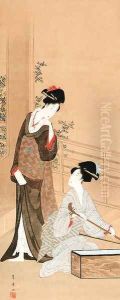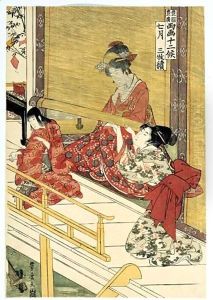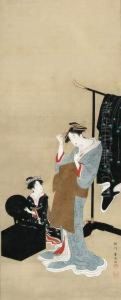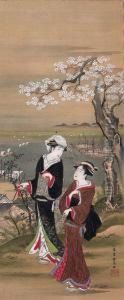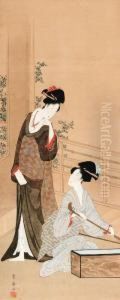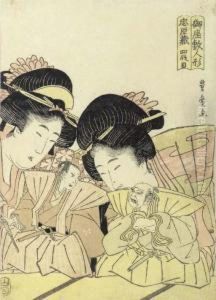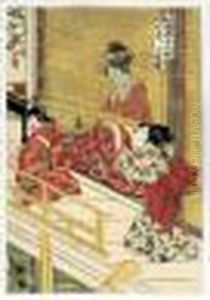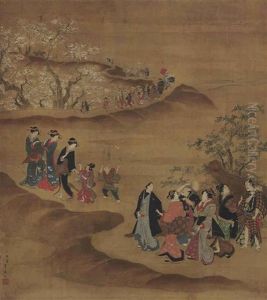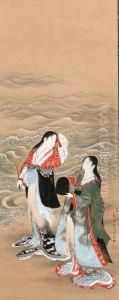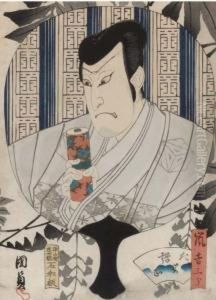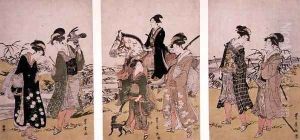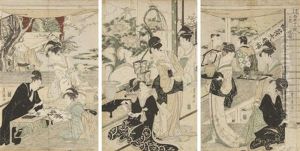Utagawa Toyohiro Paintings
Utagawa Toyohiro was a Japanese artist known for his ukiyo-e style of woodblock prints and paintings. Born in 1773 in Edo (modern-day Tokyo), Toyohiro was a student of Utagawa Toyoharu, who was the founder of the Utagawa school, one of the most important and prolific schools of Japanese woodblock printing. Toyohiro became an important artist in his own right, and he played a significant role in the development of landscape printing in Japan.
Toyohiro's works often depicted landscapes, flowers, and birds, as well as scenes from daily life in Edo. He was particularly skilled at capturing the beauty of Japan's natural scenery, and his prints were known for their delicate lines and attention to detail. One of his most famous series is 'Famous Views in the Eastern Capital' which showcased the beauty of Edo. He was also one of the early artists to produce 'bijin-ga' (pictures of beautiful women).
While Toyohiro might not be as well-known as some of his contemporaries such as Hokusai or Hiroshige, his work had a significant influence on the Utagawa school and helped establish some of the stylistic foundations that would be developed further by his students. Toyohiro's most notable student was Utagawa Hiroshige, who would become one of the greatest landscape artists of the Edo period.
Utagawa Toyohiro's career was marked by his innovative approach to perspective, which was influenced by Western art techniques. He was among the first Japanese artists to experiment with Western perspective, which added depth and realism to his prints. This experimentation contributed to the development of the Utagawa school's distinctive style, which would become highly influential in the later periods of ukiyo-e art.
Toyohiro continued to work and teach until his death in 1828. Although he may not have achieved the same level of fame as some of his peers, his contributions to Japanese art, particularly in the realm of landscape ukiyo-e, were significant. His legacy is preserved through his prints and through the work of his students, who carried on the traditions and techniques he helped to refine.
